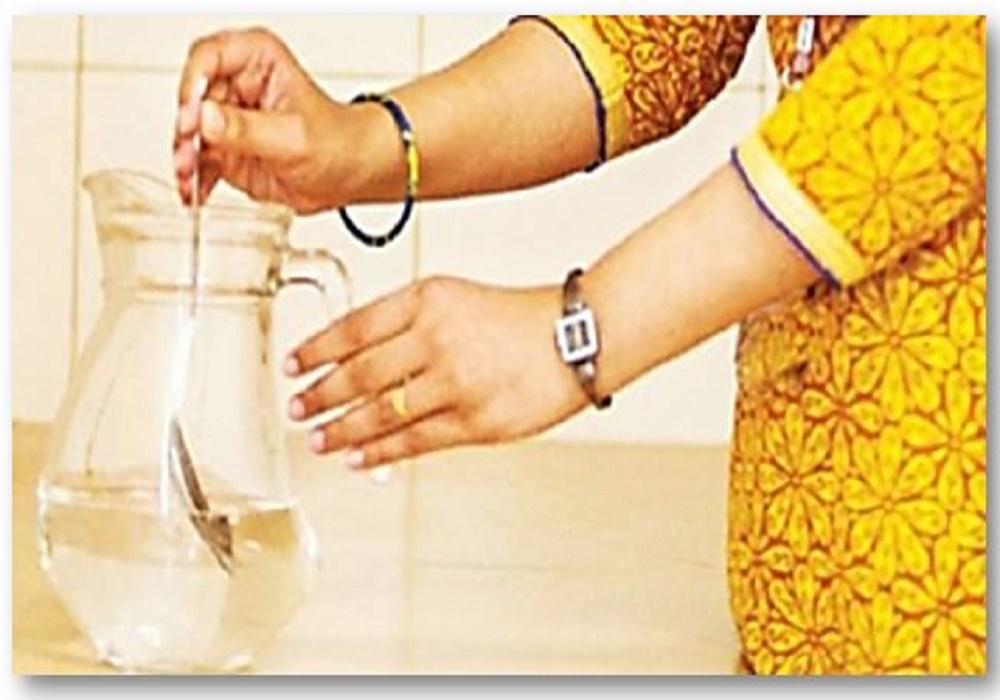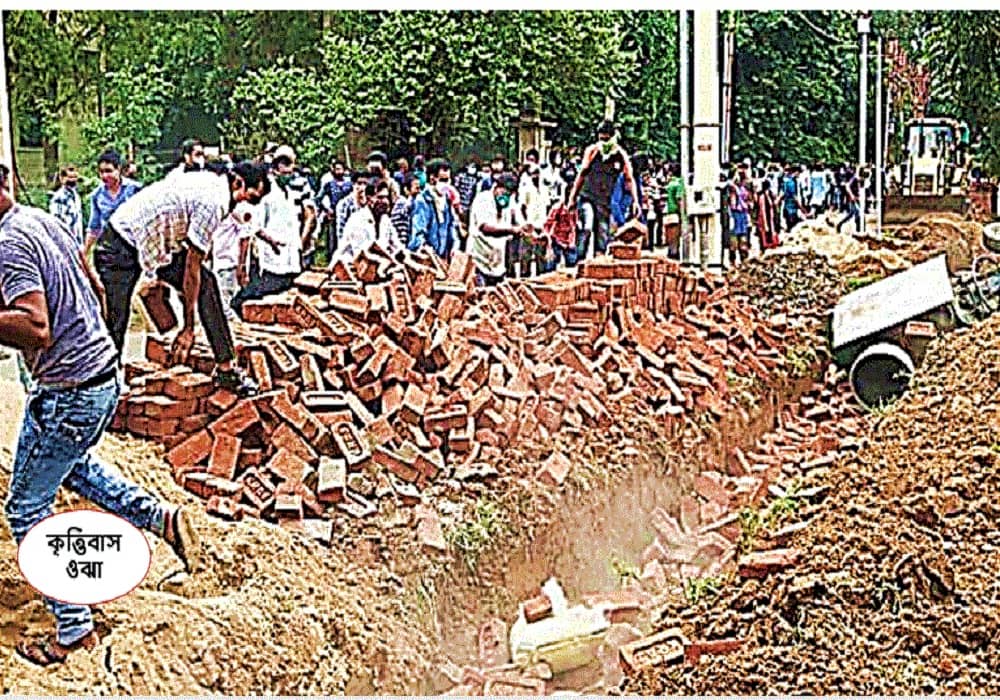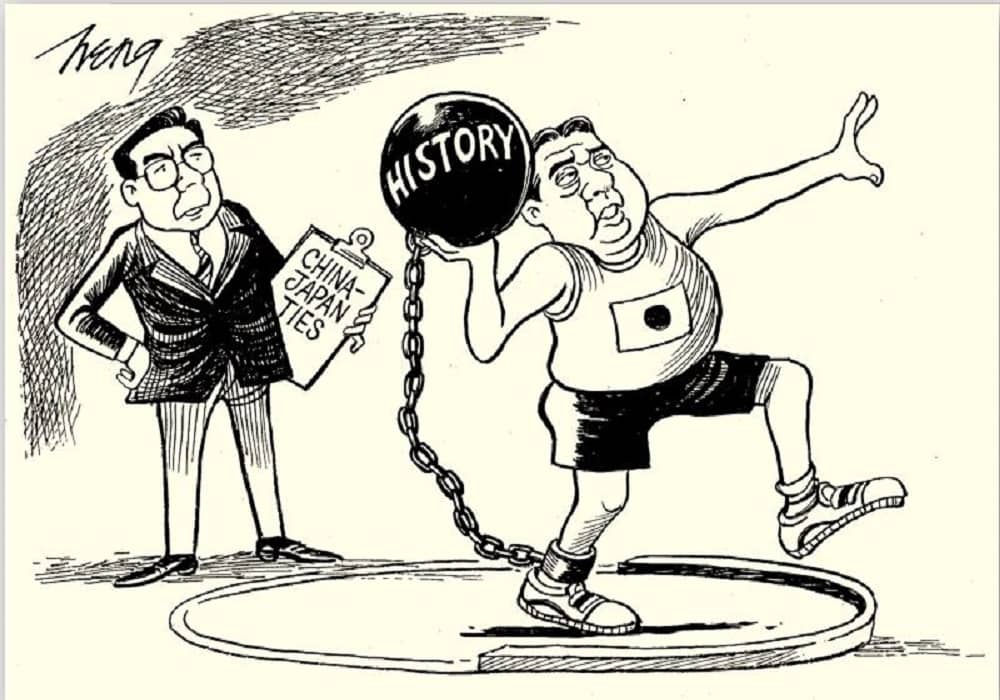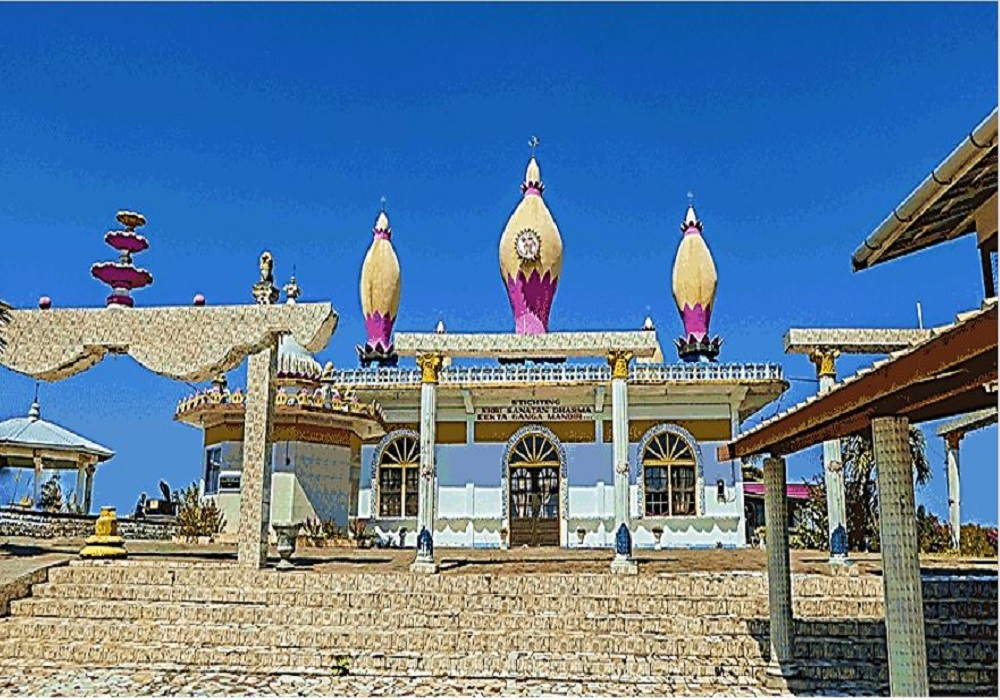হেমেন্দ্র নাথ চ্যাটার্জী খাবার স্যালাইনের ফর্মুলা আবিষ্কারক। কেন তিনি বর্ণ–বৈষম্যমূলক ভাবধারা শিখার ???
সময়টা ছিল ১৯ দশকের শুরুর দিকে। কলেরা গ্রামের পর গ্রাম মহামারী আকার ধারণ করেছে। প্রতিদিন কোন না কোন পরিচিত মুখ মৃত্যু নামক দানব দ্বারা হারিয়ে যাছে। এই মহামারীর আকার এত বেশি ছিল যে মানুষ প্রাণ বাঁচাতে তার জন্মভূমি ছেড়ে পালিয়ে যাচ্ছে। গ্রামের প্রতিটি ঘরে কান্নার আহাজারি সাথে পড়ে আছে প্রিয় মানুষের লাশ। শবদেহ গুলো পড়ে আছে সৎকারের কেউ নাই।
প্রতিটি বাড়ি থেকে ভেসে আসছে তীব্র জল পিপাসার্ত রোগীদের আর্তনাদ। কিন্তু সামান্য জল কেউ হাতের কাছে এনে দিচ্ছে না। বরং প্রিয়জনরা সর্বোচ্চ চেষ্টা করছে যেন তাদের সেই বাড়ির প্রিয় মানুষটি কোন ভাবেই জল স্পর্শ না করতে পারে। আবার অনেক বাড়ির লোকেরা বাধা দিতে না পেরে প্রিয় মানুষটিকে হয় দড়ি দিয়ে বেঁধে নয় ঘরে আটকিয়ে রেখেছে।
এবার আসি কেন এই ব্যবস্থা, কারণ ঐ সময় কলেরা রোগের জন্য নিরাময়ের এই পথই ছিল খুলা বা ব্যবস্থাপত্র! তবে আমি যে কথাগুলো এখানে এত সময় বর্ণনা করলাম সেটা কিন্তু মিথ্যা নয়। ঠিক এই ধরণের চিত্র ছিল বাংলাদেশের জামালপুর জেলার ঝিনাই নদীর অববাহিকায় ঘোষেরপাড়া নামক প্রত্যন্ত গ্রামের।
যদিও এখনো বহির্বিশ্ব থেকে গ্রামটি মোটামুটি বিচ্ছিন্ন। প্রযুক্তির এই যুগেও গ্রামটি বিদ্যুতের আলো পাকা রাস্তা থেকে বঞ্চিত। এখনো সেখানে যেতে হলে যেতে হয় হেঁটে। কলেরায় বিশ্বের মহামারি রোগ এর মধ্যে একটা সময় ছিল অন্যতম। এই মহামারি রোগ লক্ষ লক্ষ মানুষের প্রাণ নিয়েছে গত ২০০ বছরে। তবে আশার কথা হল খাবার স্যালাইন এবং উন্নত পয়ঃনিষ্কাশন কারণে এখন আর সেভাবে মানুষ অন্তত এই রোগে মারা যায় না। তবুও WHO’র তথ্য অনুসারে এখন বিশ্বে প্রতি বছর লক্ষ্য উপর মানুষ মারা যায়।
আমরা যদি একটু খেয়ার করি দেখব জীবনে এমন কোন মানুষ নাই যে তার একবারের জন্য হলেও এই কলেরিয় (ডায়রিয়া) হয় নাই। আশার কথা এটাই বর্তমানে খাবার স্যালাইন আবিষ্কারের ফলে বহু সংখ্যক মানুষের প্রাণ রক্ষা পাচ্ছে। ঠিক এই আলোচনা এই পর্যায় দাঁড়িয়ে নিশ্চই আপনার মনে প্রশ্ন আছে কে এই খাবার স্যালাইনের আবিষ্কারক? মাইক্রোবায়োলজিতে ঢাকা বিশ্ববিদ্যালয়ে পড়ার সময় আমার মনে এই প্রশ্নটি প্রাই মনের মাঝে উকি দিত। কিন্তু অন্যদের মত আমিও জানতে পারলাম যে খাবার স্যালেইন ঢাকার মহাখালীর কলেরা গবেষণা প্রতিষ্ঠান “আইসিডিডিআরবি” থেকে আবিষ্কার হয়েছিল। তবে এই আবিষ্কারের পিছনের মানুষটি কথা জানার জন্য খুব ইচ্ছা হত। তাই বিশ্ববিদ্যালয়ের শিক্ষক থেকে শুরু করে আইসিডিডিআরবি’র সহকর্মীদেরকে কাছে ছুটে গিয়েছি। কিন্তু এর কোন সটিক জবাব আমি পানাই। তাই একটু বেশিয় অবাক হতে থাকলাম এমন এক জন্য মহামানবের নাম বা ঠিকানা কেউ জানে না।
যে মানুষটি আমাদের এই সমাজের দৃশ্যপট বদলিয়ে দিয়েছিল তাকে কেউ মনে রাখে নাই? কিন্তু কেন এই ভুলে যাওয়া বা না জানা! কেন যেন নিজেকে অকৃতজ্ঞ মনে হতে লাগল। অবশেষে যখন ২০০১ সালে আইসিডিডিআরবি’কে কলেরা গবেষণার সাফল্যের স্বীকৃতিস্বরূপ বিল গেটস গণস্বাস্থ্য আওয়ার্ড দেয়া হয়। তখন প্রচণ্ড উৎসাহ ও উদ্দীপনার সাথে ঢাকা আইসিডিডিআরবি সেন্টারের মতো মতলব সেন্টারেও বিশেষ অনুষ্ঠানের আয়োজন হয়। সর্বশেষ অনুষ্ঠান শেষে সবাই মিলে আওয়ার্ডটিকে নিয়ে ফটোসেশন হল।
তৎকালীন ডিরেক্টর ডেভিট স্যাক ডায়রিয়া গবেষণা নিয়ে বহু মূলবান বক্তব্য দিলেন। মতলব সেন্টারের (সেখানে খাবার স্যালাইনের মাঠ পর্যায়ে প্রথম ট্রায়াল হয়েছিল) অবদানের কথা শুনলাম সাথে অনেক কথাও। কিন্তু দুঃখের বিষয় প্রকৃত আবিষ্কারকটি অগোচরেই রয়ে গেল। এক বুক ব্যথা ভরা হৃদয় নিয়ে ল্যাবে ফিরে এলাম। এবার আমি নেট জগতের আশ্রয় নিলাম (এখানে বলে রাখা ভাল এই লিখাটি বা গবেষণাটি ২০০৯ সালের) উইকিপিডিয়া মতন তথ্য ও জ্ঞান ভাণ্ডারেও কোন তথ্য পেলাম না।
বহু চেষ্টা করেও এই বিষয়ে তেমন কোন সদ উত্তর পেলাম না। তাই আমার কাজের ফাঁকে ফাঁকে এই বিষয়টি নিয়ে ইন্টার্নেটে গুগল সার্চ করতাম কিন্তু বহু দিন কেটে গেল তেমন কোন উত্তর পেলাম না খুব হতাশ হলাম। হঠাৎ একদিন গুগলে সার্চ করতে করতে পেয়ে গেলাম একটি লিং । সেই লিং ধরে আগাতে আগাতে বিখ্যাত বৈজ্ঞানিক জার্নাল Lancet-এ এ-সম্পর্কিত তথ্য পেলাম! ‘খাবার স্যালাইনের ফর্মুলা’র আবিষ্কারককে আবিষ্কার করলাম!
Chatterjee HN (Lancet, 1953 Nov 2;2(6795):1063)
Abstract: Control of the vomiting symptom of cholera was attempted by treatment with avomine followed by rehydration. In back-to-back cholera epidemic years in India, 59 cases and 127 cases in 1952 and 1953, respectively, were treated with avomine (25 mg; 14 mg of promethazine base and 11 mg of 8-chlorotheophyllin e); vomiting was often checked with use of only 1 tablet, although up to 6 tablets were administered in 1 case. Because vomiting was easily controlled by avomine, oral rehydration was possible, and the fluid replacement solution used was 4 gm of sodium chloride, 25 gm of glucose and 1000 ml of water. To check diarrhea, which avomine does not do, these cases were given the leaf juice of an Indian plant, Coleus (for info, Neem leaf).
কে স্যালাইনের ফর্মুলা আবিষ্কার করেন?
এই মহামারি রোগের উপর বহু মানুষ যুগে যুগে বহু গবেষণা করে গিয়েছে। তবে বর্তমানে খাবার স্যালাইনের এই ফর্মুলার আবিষ্কারটি মূলত ১৯৫৩ সালে প্রাকশিত হয়। কিন্তু এই মূল্যবান আবিষ্কারটির জন্য আবিষ্কারকের যথাযথ স্বীকৃতি দেয়া হয়নি। জনস্বাস্থ গবেষণার বিখ্যাত জার্নাল Lance-এ ১৯৫৩ সালে প্রকাশিত একটি পেপার থেকে জানা যায়, গ্লোকজ ট্রাসপোর্টের গবেষণার উপর ভিত্তি করে কলকাতার (ভারত) ডাক্তার হেমেন্দ্র নাথ চ্যাটার্জী খাবার স্যালাইনের ফর্মুলা আবিষ্কার করেন। হেমেন্দ্র নাথ চ্যাটার্জী আরো অন্তত ৫টি জার্নাল পেপার প্রকাশ করেন এই কলেরা উপর। তবে হেমেন্দ্র নাথ চ্যাটার্জী এই অনবদ্য সৃষ্টিকে আলোতে না আসতে দিবার পিছনে অনেকেরই ধারণা এর পিছনে বর্ণ-বৈষম্যমূলক ভাবধারা জড়িত থাকতে পারে।
পরবর্তীতে ১৯৬৮ সালে ঢাকার আন্তর্জাতিক উদারাময় গবেষণা কেন্দ্র আইসিডিডিআরবি (ICDDRB)-তে পশ্চিমা বিজ্ঞানীরা প্রায় একই ফর্মুলা আন্তর্জাতিক জার্নালে দ্বিতীয়বারের মত প্রকাশ করেন। মাঠ পর্যায়ে এর কার্যকারিতা গবেষণা করে ঢাকার আইসিডিডিআরবি খাবার স্যালাইনকে কলেরার অন্যতম ব্যবস্থাপক হিসেবে প্রতিষ্ঠিত করে বিশ্বব্যাপী সুনাম অর্জন করেছে।
১৯৫৩ সালের গবেষণা পত্রটি পড়ে সিদ্ধান্ত নিলাম যে এই গুরুত্বপূর্ণ তথ্যটি অন্তত ঢাকা বিশ্ববিদ্যালয়ের মাইক্রোবায়োলজিস্ট এলামনাইদের জানানো উচিত। তাহলে শিক্ষকরা অন্তত ক্লাসে পড়ানোর সময় এ বিষয়টি আলোকপাত করতে পারেন। এজন্য ঢাকা বিশ্ববিদ্যালয়ের DUMAA (Dhaka University Microbiologists Alumni Association), GMA (Graduate Microbiologists Association), ইয়াহু গ্রুপ, BD researchers ইয়াহুগ্রুপ, NFB (News From Bangladesh) ও সদালাপ নামক বাংলা ই-জার্নালে ইমেল দিলাম (ইমেল আইডি মুছে দেয়া হয়েছে)।
From: sorowar
To: [email protected]; GMA ; DUMAA ; Shodalap Editor; [email protected]
Sent: Fri Jan 16 05:51:34 2009
Subject: Who discovered saline (ORS) for cholera/diarrhoea treatment??
Dear fellow conscience citizens of the global village,
As a microbiologist and former employee of ICDDRB, my curious mind always used to ask “who discovered the ORS (oral rehydration saline) for diarrhoea management?” while working at ICDDRB I inquired senior fellows/scientists about this issue. But the answer was always disappointing. When ICDDRB was celebrating the Gates Award for life saving discovery of ORS, I thought, this time, I would learn the fact. But my curiosity was shattered.
Finally, I have discovered the discoverer of ORS who first successfully treated dirarrheal patients and published his ground-breaking simple recipe in the Lancet in 1953. Shockingly, he was almost forgotten until the publication of the history of ORS in medical history (Medical History, 1994, 38: 363-397). It dedicates only a single paragraph and writes:
“It is generally agreed that racism or the lack of a “scientific” rationale prevented the widespread adoption of his work”
But 15 years later, most of the credit goes to Nalin and Cash who were the first to demonstrate oral therapy as a practical therapeutic alternative to parenteral therapy in April 1968 based on field trial, performed at ICDDRB, Matlab, Chandpur , Bangladesh . They have got all the accolades worldwide.
Even Wikipedia did not spare a single line about Hemendra Nath Chatterjee (A bangalee from Calcutta, west Bengal) who first formulated and demonstrated the effectiveness ORS for diarrhea management.
Same thing is true for Sir Jagadish Chandra Bose who was not credited for discovery of radio communication for long time. He might not be honored in the world for that discovery, but at least we know about this story and respect him. According to Wikipedia:
“Bose’s place in history has now been re-evaluated, and he is credited with the invention of the first wireless detection device and the discovery of millimetre length electromagnetic waves and considered a pioneer in the field of biophysics”
Alas! Hemendra Nath Chatterjee is not even remembered, let alone honored. It would be ungrateful and unethical if we don’t pay tribute to him.How should we pay tribute to Hemendra Nath Chatterjee?
His name should be placed in the text book in our country in the relevant area. In the University (esp. in Microbiology department), his discovery should be discussed. More importantly, ICDDRB must acknowledge his contribution along with other contributors, as it is famous for ORS research.
Regards,
Sorowar, Singapore
Note: please find below the abstract of Chatterjee’s work
আমি মেলটি পাঠানোর কিছুদিন পর কিছু সংখ্যক ব্যক্তি আমাকে ব্যক্তিগত মেল করে। সেই মেল গুলি পড়ার পর মনটা খুব খারাপ হয়ে গিয়েছিল। বেশির ভাগ মেলেই আমাকে দোষারোপ করে লেখা ছিল আমি না কি আইসিডিডিআরবি স্বার্থবিরোধী কর্মকান্ডের করছি।
এখানে বলে রাখা ভালো ঢাকা বিশ্ববিদ্যালয় থেকে পাশ মাইক্রোবায়োলজিস্টদের একটা মোটা অংশ আইসিডিডিআরবি’র সাথে কোন না কোনভাবে জড়িত। ঠিক এই বিষণ্ণ অবস্থায় আমি একটি ইমেল পেলাম যা পুরো আলোচনার মোড় ঘুরিয়ে দেয়। আমেরিকার মেরিল্যান্ডে কর্মরত বিজ্ঞানী ড. আফজাল চৌধুরী আমার ইমেলের সাথে একমত প্রকাশ করে আমার মেইলটি আইসিডিডিআরবি’র শীর্ষস্থানীয় কর্মকর্তা Jean Sack-কে ফরওয়ার্ড করে জানতে চান যে আইসিডিডিআরবি’তে কাজ করা সত্ত্বেও তিনিও এ বিষয়টি মিস করেছেন? Jean Sack এর প্রতিউত্তর ইমেলটি ঘরোয়া থেকে বিষয়টিকে আন্তর্জাতিক পর্যায়ে রূপ দেয়। এই ইমেইল আলোচনায় কলেরা গবেষণায় বিশ্ব বরেণ্য বিজ্ঞানীদেরকেও (যেমন David Nalin, Richard Cash যা আমার প্রথম ইমেইলে উল্লেখিত ছিল) যুক্ত করা হয়।
From: Jean Sack
To: Brad Sack ; David A Sack ; Balakrish Nair
Cc: Bert Hirschhorn ; David Nalin ; richard cash ; Rosario Davison
Sent: Friday, January 16, 2009 4:44:59 PM
Subject: Fw: [gma_2100] Who discovered saline (ORS) for cholera/diarrhea treatment??
This is not a new controversy. I can’t remember talking to Sorowar in Dhaka about it, however. I remember hearing about this paper from a Calcutta scientist during our research for the Smriti book but also that this work by Hemendra Nath Chatterjee was never properly credited nor expanded beyond his first small clinical trials. Brad, when you were in Calcutta your group was also working on ORS – did you know Dr. Chatterjee? Krish, what is Chatterjee’s scientific credibility and fame now in West Bengal? I wonder if the 1953 Lancet article influenced Bert Hirschhorn’s work on composition of the ORS during those field trials run by Cash and Nalin? I’m copying you all and hoping you can clarify.
Would one of you care to respond to Afzal here in Maryland and to Sorowar in Singapore? They are fair-minded people and would accurately post your insights to the group, I’m sure!
Unfortunately, in the scramble for “credit” we sometimes fail to thank all of those who worked on (and many failed) on a simple way to save lives from diarrhea dehydration. Most basic scientific discoveries don’t go back to one person’s efforts but are the result of consultations (like those at the 1960s scientific conference in San Francisco that inspired further research on both sides of the Bengal border). In fact, perhaps controversies like this one will stir up the research community to respond to the high death toll currently from cholera in benighted Zimababwe where ORS was not being used for the especially virulent strain of cholera. Intellectual blame or credit doesn’t excuse us from continuing to save lives today! ………. (unrelated part deleted)
Jean C. Sack, MLS
Jean Sack এর মেইলের ফলশ্রুতিতে ১৯৬০’র দশকের Norbert Hirschhorn মহাখালী কলেরা রিসার্চ ল্যাব (যা বর্তমানে আইসিসিডিডিআরবি নামে পরিচিত) কর্মরত বিজ্ঞানী প্রতিউত্তর দেন। Norbert Hirschhorn খাবার স্যালাইন প্রতিষ্ঠাকরণের জন্য বিশ্বব্যাপী বিজ্ঞানী হিসেবে পরিচিত।
From: Jean Sack
Sent: Friday, January 16, 2009 10:20 AM
To: Chowdhury, Afzal R.; sorowar
Subject: Fw: [gma_2100] Who discovered saline (ORS) for cholera/diarrhea treatment??
Here is the first response from one of the CRL lab persons in the 1960s who now lives in London. He sent his insights to everyone involved except you two!! Sorry but I’m a connector so here it is almost direct:
Jean C. Sack, MLS
—– Forwarded Message —-
From: Norbert Hirschhorn
To: Jean Sack ; Brad Sack ; David A Sack ; Balakrish Nair
Cc: David Nalin ; richard cash ; Rosario Davison ; david sachar ; david sachar ; william greenough ; william greenough ; norbert hirschhorn ; Qais Al-Awqati
Sent: Friday, January 16, 2009 10:10:19 AM
Subject: Re: [gma_2100] Who dicovered saline (ORS) for cholera/diarrhea treatment??
Our initial work in the Cholera Hospital, 1965-67, was based on a) David Sachar’s discovery that, electrophysiologically, the human with cholera could absorb glucose and sodium; and b) an understanding why Bob Phillips and his crew went so wrong in supplying concentrated salt and sugar (to ‘cure’ the ‘poisoned’ sodium pump, Bob’s favorite theory of cholera). I hadn’t heard of Chatterjee’s work then.
Josh Ruxin wrote all this up in a splendid monograph, attached. He also mentions Qais Al-Awqati who invented the method on his own during a cholera epidemic in Baghdad in 1966, based on reading of the literature in gut physiology of glucose-sodium transport (Qais is Robert F. Loeb Professor of Medicine at Columbia University College of Physicians and Surgeons).
cheers,
Norbert Hirschhorn MD
Jean Sack এর ইমেলে উল্লেখিত “The scramble for credit” এবং “Most basic scientific discoveries don’t go back to one person’s efforts but are the result of consultations” এর উপর ভিত্তি করে আমি নিন্মোক্ত উত্তর দেই। আমি তার সাথে একমত। কিন্তু চ্যাটার্জীর ক্ষেত্রে ডায়রিয়া ব্যবস্থাপনায় অবদানের জন্য নামটিও পর্যন্ত কেন শুনলাম না?
From: Sorowar Hossain
Subject: RE: Who discovered saline (ORS) for cholera/diarrhea treatment??
To: “GMA” , “DUMAA”
Cc: “Jean Sack” “Brad Sack” “David A Sack, Balakrish Nair
Date: Wednesday, January 21, 2009, 4:39 AM
It’s not a matter of emotionalism; it’s a matter of rationalism. As a human being, I felt mentally betrayed. That’s why; my tiny effort was to share my very personal feelings to a tiny community of Bangladesh. On international perspective, Chatterjee’s fate already been decided, this could not be reversed.
Questioning Chatterjee’s “scientific rationale” would eventually discredit the prestigious Journal, Lancet.
Where there is an opportunity, I love to highlight the immense contribution of ICDDRB for global health. I did work there only for one year. I don’t know most the people in the email thread which included all those great contributors in the establishment of ORS and cholera research. I want my former institute to be more honored and famed. Acknowledging Chatterjee’s contribution along other contributors would surely increase the reputation of ICDDRB.
Giving credit those who deserve the credit is very important to make a better civilization. It acts as a driving force for the future generation. With the bliss of mass media and internet, many forgotten contributors of our human civilization are now resurfacing. We are learning anew about their dedication, contribution and sacrifice. For instance, one of the greatest contributors in physics recently been rediscovered: Ibn al Haytham (BBC). We, as researchers in someway are contributing to the humanity. Would it be wise or logical to say that our research findings should be published without mentioning the name of the contributors?
Regards,
Sorowar Hossain, National University of Singapore
Jean Sack আমার দ্বিতীয় ইমেইলের প্রতিউত্তর দিলেন এভাবে-
From: Jean Sack
Subject: Not betrayed at all
To: “Sorowar Hossain”
Cc: “Balakrish Nair”
Date: Wednesday, January 21, 2009, 5:50 AM
Sorowar, thanks for your responses. I feel a bit sorry for the listserv microbiologists who had to wade through our e-mail exchanges. Apparently Chatterjee was a wonderful experimenter who mixed his concept of rehydration (very close to the biological standards used in UNICEF’s ORS) with all sorts of other concoctions in this Lancet-published work. No one to this day quite can figure out what he did use, in fact, because one natural plant was misnamed. So, scientifically, his paper was just the opening of many new ways of looking at cholera treatment with only some of his methods repeatable in his time. I haven’t heard yet from Balakrish Nair who could more fairly give us reflections on Chatterjee’s impact.
As you know, ICDDR,B does try “new” interventions (the rice-based ORS, neem leaf concoctions, zinc for better antibody rebuilding following disease, artemesian + antibiotics for malaria) but also the protocals attempt to measure the results independently of other variables. I think Chatterjee would have enjoyed working with your colleagues there but he might have had a problem with the scientific review committees and the ethical review committees that we have in place now.
I’m very glad to have participated in this conversation! The fact that this grandfather of cholera treatment experiments died without a Gates Global Health Award is sad but it doesn’t diminish the human value of his attempts to save the lives of those he treated for cholera! Communicating the proven and simple methods of life-saving remains a problem today. Your postings may indeed result in a better flow of knowledge that would make Chatterjee and his Bengal and Western colleagues glad!
Jean C. Sack, MLS
Jean Sack তার মেইলে Balakrish Nair এর নাম উল্লেখ করে এ বিষয়ে তার মতামত জানতে চেয়েছিলেন। কিন্তু আশ্চর্যজনকভাবে তিনি নীরব ভূমিকা পালন করেন। এমনও হতে পারে যে ব্যক্তিগত ক্যারিয়ারের কথা চিন্তা করে নিরাব দর্শকের ভূমিকা পালন করেছিলেন। প্রসংগত, Balakrish Nair কলেরা গবেষণায় একজন বিখ্যাত বিজ্ঞানী (ভারতীয়)। তিনি বাংলাদেশের আইসিসিডিডিআরবি’র Laboratory Sciences Division (LSD) এর ডিরেক্টর ঐ সময় পদে ছিলেন। বর্তমানে তিনি হেমেন্দ্র নাথ চ্যাটার্জীর জন্মভূমি কলকতার National Institute of Cholera & Enteric Diseases-এ ডিরেক্টর পদে রয়েছেন।
আন্তজার্তিক পর্যায়ে হেমেন্দ্র নাথ চ্যাটার্জীর ভাগ্য আগেই লিখা হয়ে গেছে। এটা আর পরিবর্তনীয় নয়। আমার বিবেকের তাড়ণায় সচেতনতা গড়ে তোলার এটি ছিল ক্ষুদ্র প্রয়াস। ইমেল করার আগে ধীরে সুস্থে চিন্তা করে পোষ্ট করেছি কেননা এতে দেশে লোভনীয় ক্যারিয়ার নষ্ট হয়ে যাওয়ার যথেষ্ট সম্ভাবনা রয়েছে। জানি না আমার ক্ষুদ্র প্রচেষ্টা কতদূর সফল হয়েছে। অন্তত ব্যক্তিগতভাবে কৃতজ্ঞতা প্রকাশ করে মানসিক শান্তি পাই।
মেইল চালাচালির প্রায় বছর দুয়েক পরে গুগুল সার্চ করতেই দেখি হেমেন্দ্র নাথ চ্যাটার্জী’র প্রোফাইল উইকিপিডিয়াতে চলে এসেছে (দেখুন Hemendra Nath Chatterjee)। ডায়রিয়ার স্যালাইন তৈরীর ইতিহাসও আপডেট করে তার নাম যুক্ত করা হয়েছে (দেখুন History of oral rehydration therapy)। এই মহতী উদ্যেগ দেশের তরুন সমাজের পক্ষ থেকেই করা হয়েছে। এখন যে কেউ ইন্টার্নেট সার্চ দিয়ে কলেরা সম্পর্কে জানতে চাইলে হেমেন্দ্র নাথ চ্যাটার্জীর অবদানের কথাও জেনে যাবে।
বাংলাদেশের পত্রিকাওয়ালারা এ সমস্ত বিষয়ে নিয় কোন মতে কথা বলতে চান না। এটা বাংলাদেশের মতন দেশের ক্ষেত্রেই প্রযোজ্য নয়। গরীব দেশগুলোতে সাংবাদিকদের উপর সহজে প্রভাব বিস্তার করা যায়। এর উপর সঠিক ধারণা পেতে এখানে দেখতে পারেন। তাই আমার শেষ কথা থাকবে বর্তমান দেশের ব্লগের তরুন সমাজই পারে সমাজ এবং দেশেকে সঠিক দিক-নির্দেশনা দিতে। দলমত জাতি বর্ণ নির্বিশেষে দেশের তরুন ব্লগাররা সঠিক সময়ে ঐক্যবদ্ধ হচ্ছে, মিথ্যার বিরুদ্ধে প্রতিবাদ করে যাচ্ছে, যা আমাকে বাস্তবিকই আশার আলো দেখায়। রিসার্চ কমিউনিটি, এমনকি স্বদেশী ও বিদেশী কেউই হেমেন্দ্র নাথ চ্যাটার্জীকে যথোপযুক্ত সন্মান না দিলেও আমরা তাঁকে শ্রদ্ধাভরে স্মরণ করব।
সর্বশেষ আসুন দেখিনি বাংলা উকিপিডিয়া এখন খাবার স্যালাইনের আবিষ্কারকের নাম হেমেন্দ্রনাথ চট্টোপাধ্যায় সম্পর্কে কি প্রকাশ করেছে।
কেন ডাঃ হেমেন্দ্র নাথ চ্যাটার্জী বর্ণ-বৈষম্যমূলক ভাবধারা শিখার?
ডাঃ হেমেন্দ্র নাথ চ্যাটার্জী বর্ণ-বৈষম্যমূলক ভাবধারা শিখার এই শিরোনামে হয় তো অনেকই প্রশ্ন তুলতে পারেন, তাদরে জন্য মিথ্যাচারের এই লিংটি থাকল। যদি আপনি গুগলে গিয়ে “খাবার স্যালাইনের ফর্মুলা আবিষ্কারক” দিয়ে সার্চ দেন তবে “রফিকুল ইসলাম (বিজ্ঞানী)” নাম আসবে। আমরা উপরে আলোচনা করেছি যে ডাঃ হেমেন্দ্র নাথ চ্যাটার্জী খাবার স্যালেইনের আবিষ্কারক তার সত্যতা বর্তমান বাংলা উকিপিডিয়াতেও আছে। যেটা তিনি ১৯৫৩ সালে করেছেন। তবে “রফিকুল ইসলাম (বিজ্ঞানী)” কে? তার জন্ম ১৯৩৬ কুমিল্লা, বেঙ্গল প্রেসিডেন্সি, ব্রিটিশ ভারত (বর্তমান বাংলাদেশ) ১৯৫৩ সালে যার বয়স ছিল ১৭ বছর । উইকি বলছে তিনি ১৯৬৫ সালে ঢাকা মেডিক্যাল কলেজ থেকে এমবিবিএস পাস করেন তখন তার বয়স ২৯ বছর। তা হলে উইকিতে কেন এই মিথ্যাচার? ভাবুন ভাবার প্র্যাকটিস করুন।
মূল লিখাটি
মূল লেখক, Sorowar



